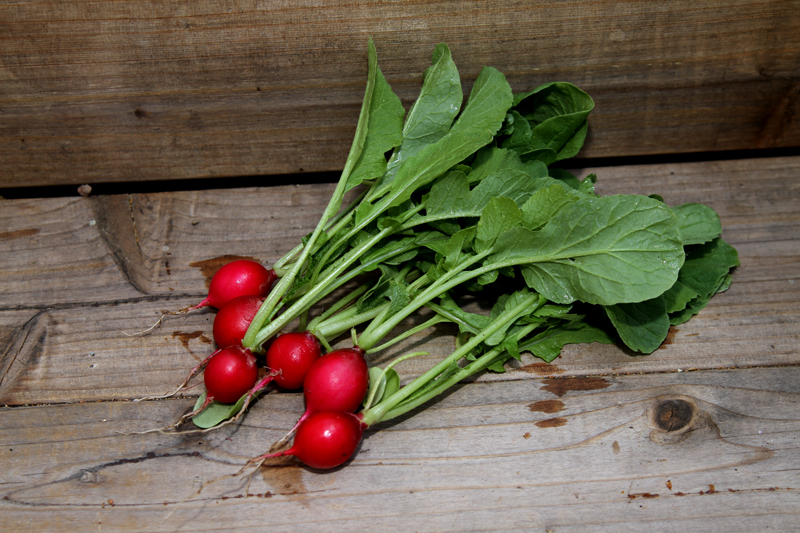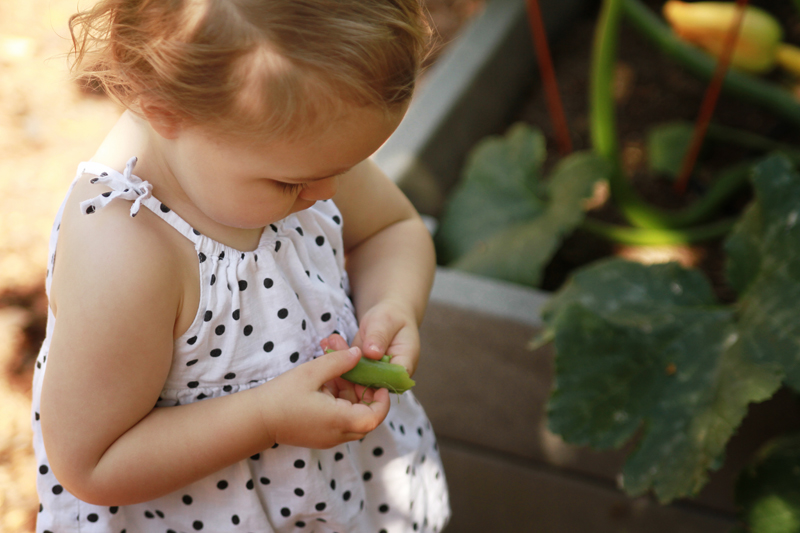Raised Bed Gardening From the Ground Up!


There are so many reasons to garden in raised beds! You can blend your own soil or purchase the perfect soil mix for the plants you want to grow, it is easy to set up a simple drip system to keep the plants well watered, the soil heats up sooner in spring so you can plant earlier, it’s easy to cover the beds with plastic to create a mini greenhouse for starting plants earlier than in open ground, seeds are easier to start and it keeps the garden tidy with bark pathways in between beds (no weeds to pull!).
Last Spring, with help from my husband, (OK, he didn’t actually just help, he did all the building!) we installed 4 – 2 ‘x 8′ and 3 – 2′ x 5’ beds made from a friend’s old Trex decking. They tore out their deck and we recycled it into planters! We had soil delivered from Grab and Grow, a local company that makes a wonderful planting mix for raised bed use. It’s usually cheaper to have a load of potting soil delivered if you need a large amount…I love Miracle Gro Potting Mix and use it for everything I have planted in pots in my garden, but buying 3 yards, bag by bag, would not be the way to go!
 Picking your site and size
Picking your site and size
Begin by picking a spot that gets 6-8 hours of full sun per day. Figure out how you want to lay out your beds and build them in place since they are heavy! You might want to line the bottom of the beds with hardware cloth if you have gophers…we don’t, so we skipped this step. Build beds at least 10-12 inches deep…We used 2″x 6″ boards, stacked two boards high. Use screws to secure the boards to 4×4’s in the corners since nails don’t hold as well. There are many garden books that diagram how to build a raised bed so check out a few to decide what you like. Our first bed, years ago, was 16′ long and 4′ wide and we sunk the corner posts (4×4’s”) into cement. Lesson learned: 4′ wide was too wide for me, 16′ was too long and, in our case, it wasn’t necessary to sink the corner posts . The new beds just sit on top of the ground and they are heavy enough to stay put, small enough to reach over and walk around… and much easier to use!
What to Plant
Now that you’ve built a bed or two what should you plant? Many crops are well suited to the smaller backyard raised bed garden. You may want to checkout the book Square Foot Gardening by Mel Bartholomew( www.squarefootgardening.org) for some great information on spacing plants in your beds. By using this method you divide your beds into one foot squares for seeding and planting.You can plant 9 green bean seeds in a square foot, 4 lettuce plants, 9 spinach plants, or 16 radishes! Tomatoes are great for raised beds (9 sq.ft for bush, 1 sq. ft for vine) as well as cucumbers( 2 per sq. ft.), green onions (9 per sq. ft.) zucchini (9 sq. ft per bush), chard ( 4 per sq. ft.), peas (8 per sq. ft.) and beets (9 per sq. ft.). Some other plants can be grown but aren’t as well suited for raised beds or limited space backyards like corn or rows of artichokes and some huge vining squash plants…not that you can’t grown them…they just take up a ton of space! In future posts we’ll talk about specific varieties to grow including some that are great fun for kids!



Watering
It’s always possible to sprinkle your garden with a hose but it’s far preferable to put in a simple drip system so your plants receive even watering and the water is delivered directly to the soil and less is lost to evaporation. It also avoids the “we’re on vacation and the garden died” problem! We use drip lines connected to a timer….see your local garden center to find out the best place to learn how to install this kind of system. (If you live in Sonoma County and you’re reading this, Harmony Farms actually gives classes!) Check with local gardeners or your farm advisers office for how long and how often to water. That, to me, is the trickiest part. We have some foggy mornings all summer long so our watering is less than inland areas of California where 90 degree days with no fog are the norm. Right now ours are set to go on every other day for 10 minutes and things are looking good.
Fertilizer
I mix in steer manure and compost in spring since the soil in the boxes goes down over the season. Plants pulled out take soil with their roots and the soil settles so you always need to replenish it a little when you change crops or begin a new season. While I never use pesticides in my vegetable garden, I do use Miracle Gro plant food with good results. I water it in once when things begin to grow in the spring and then once a month in the summer which keep things green and growing.
The Harvest

Keep an eye on your garden when things get going. While the kids may be excited by a two ton zucchini, a 6 inch specimen will taste much better! Lettuce left too long will bolt and get bitter and carrots are green onions don’t have to be huge to taste good. Walk through your garden daily and check on your progress! It’s relaxing and tasty! Nothing tastes better than peas peeled from the pod and popped in your mouth fresh!
